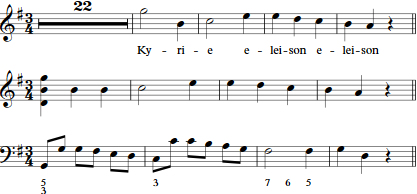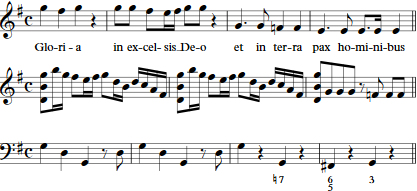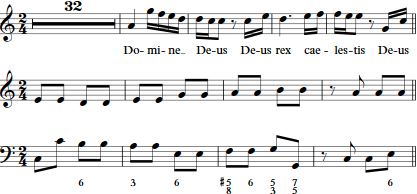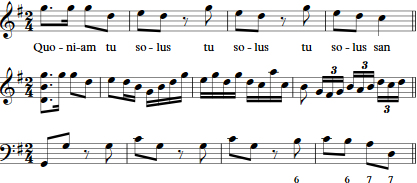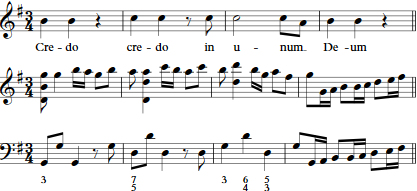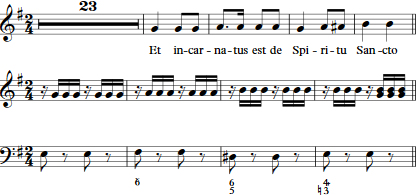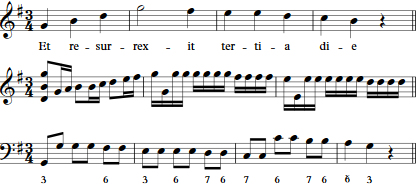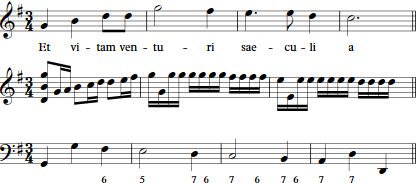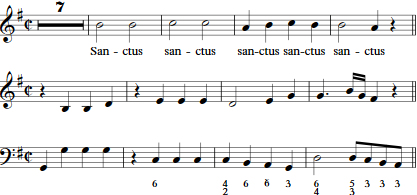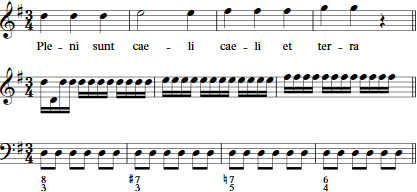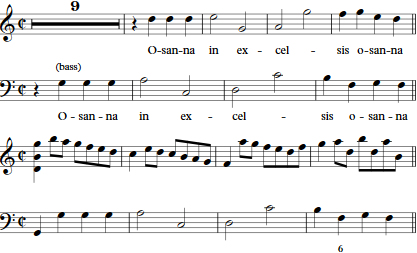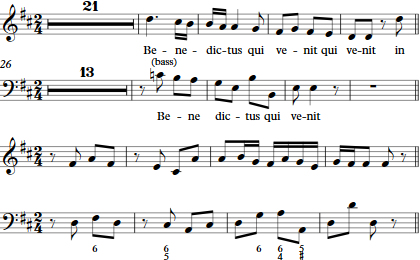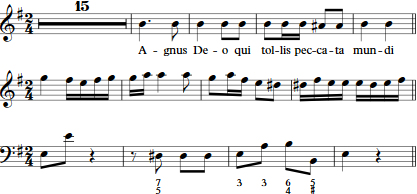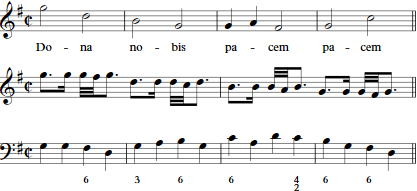Johann Baptist Wanhal
Missa in G Nokki 45 [Weinmann XIX:G1]
Wanhal ?
Nokki 45
Weinmann XIX:G1
Authenticity: Probably Authentic
This work survives in two copies, with only one of them being complete. The distance between them (Osek and Györ) suggests that more copies are likely to have existed. Stylistically, the work employs very long movements, but otherwise contain many stylistic elements that point towards Wanhal as the probably composer.
A Lost Kyrie II Movement?
The opening Kyrie movement is somewhat suspect, as it is significantly longer than any other such setting written by Wanhal.
The movement has an ABA shape, where each section is separated by a double bar and modulates back to the home key. Wanhal also did this in Nokki 10, but in that case the proportions of the movement are more neatly aligned with the work as a whole. In this work, the A parts specifically seem too long for a full repeat. Is it possible that the Kyrie was conceived as the Kyrie in Nokki 40, where the Kyrie II could be set either as a da capo of the Kyrie I or as a return to the opening of Kyrie I, which transforms into a Kyrie II fugue? This is an enticing prospect, and would be appropriate for the size of the movement. It would also most likely result in the movement being slightly shorter, which would make it less lop-sided compared to the following sections of the text. In quite a few manuscripts the fugal solution was not written out to save time. If this happened early in the lifespan of this work, there need not remain any traces of it. Note that the Kyrie sections do not contain any solo violin parts, and that one of the possible justifications for a literal repetition, that the solo violin would perform an embellished version as in a da capo aria, does not apply to this movement.
| 1785 | Osek copy dated |
Extent: 1574 bars
Music
1. Kyrie
Tempo: Allegro moderato
Metre: 34
Key: G major
Extent: 389 bars
2. Gloria
Tempo: Allegro moderato
Metre: 𝄴Key: G major
Extent: 36 bars
3. Domine Deus
Tempo: Andante
Metre: 24
Key: C major
Extent: 209 bars
This movement, unusually, sets both the Domine Deus and Qui tollis sections.
4. Quoniam
Tempo: Allegro
Metre: 24
Key: G major
Extent: 179 bars
5. Credo
Tempo: Allegro
Metre: 34
Key: G major
Extent: 82 bars
6. Et incarnatus
Tempo: Adagio
Metre: 24
Key: E minor
Extent: 63 bars
7. Et resurrexit
Tempo: Allegro
Metre: 34
Key: G major
Extent: 89 bars
Et vitam
Extent: 105 bars
Performed attacca after Et resurrexit.
8. Sanctus
Tempo: Adagio
Metre: 𝄵Key: G major
Extent: 24 bars
Pleni sunt coeli
Tempo: Allegro
Metre: 34
Extent: 20 bars
Osanna I
Tempo: Allegro
Metre: 𝄵Extent: 23 bars
9. Benedictus
Tempo: Andante
Metre: 24
Key: D major
Extent: 123 bars
Osanna II
Tempo: Allegro
Metre: 𝄵Extent: 23 bars
10. Agnus Dei
Tempo: Adagio
Metre: 24
Key: E minor
Extent: 82 bars
11. Dona nobis
Tempo: Allegro
Metre: 𝄵Key: G major
Extent: 127 bars
Sources
Performance parts, Chapter Archive, Györ
Performance parts, Museum of Music, Prague
Provenance: Osek
Violino principale missing. Split between two shelfmarks.
Bibliography
Bárdos, Kornél: Győr zenéje a 17-18. században. Akadémiai Kiadó: Budapest 1980.
Catalogus Musicalium pro Chori Ossecensi .... 1753-1894. CZ-Pnm č. př. 65/52 č. 3
Weinmann, Alexander: Themen-Verzeichnis der Kompositionen von Johann Baptiste Wanhal. Ludwig Krenn: Vienna 1987.
File title:
Missa in G Nokki 45 [Weinmann XIX:G1]
Last changed 2020-12-13 by Halvor K Hosar
Revision history
| Date | Responsible | Description |
|---|---|---|
| 2020-12-13 | Halvor K Hosar |
 Music
Music